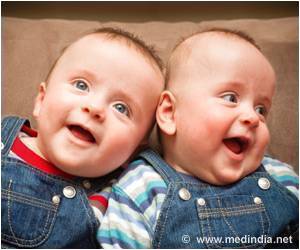New research shows that infants experience an automatic calming reaction upon being carried, whether they are mouse or human babies.

"From humans to mice, mammalian infants become calm and relaxed when they are carried by their mother," says Kumi Kuroda of the RIKEN Brain Science Institute in Saitama, Japan. "This infant response reduces the maternal burden of carrying and is beneficial for both the mother and the infant."
In other words, a mother's arms really are the best place for a young baby to be in terms of his or her chances of survival. And mothers certainly appreciate a calm and relaxed baby. That babies naturally stop crying when they are carried is an evolutionary win-win.
The idea that this very familiar scenario also plays out in mice occurred to Kuroda while cleaning the cages of her lab's mouse colony. "When I picked the pups up at the back skin very softly and swiftly as mouse mothers did, they immediately stopped moving and became compact. They appeared relaxed, but not totally floppy, and kept the limbs flexed. This calming response in mice appeared similar to me to soothing by maternal carrying in human babies."
Kuroda and her colleagues found in careful tests that the heart rates of human babies slow immediately upon carrying. After they managed to find ECG monitor electrodes small enough to use on conscious mouse pups, the researchers found that the same goes for mice.
Both mouse and human babies also stop moving when they are carried. And when baby mice are carried, their ultrasonic cries stop, too.
Advertisement
The findings have important implications for parenting and may even play a role in preventing child abuse, the researchers say, by helping grownups see things from an infant's point of view.
Advertisement
If parents understand that properly, perhaps they will be less frustrated by the crying, Kuroda says. And that puts those children at lower risk of abuse.
Source-Eurekalert










